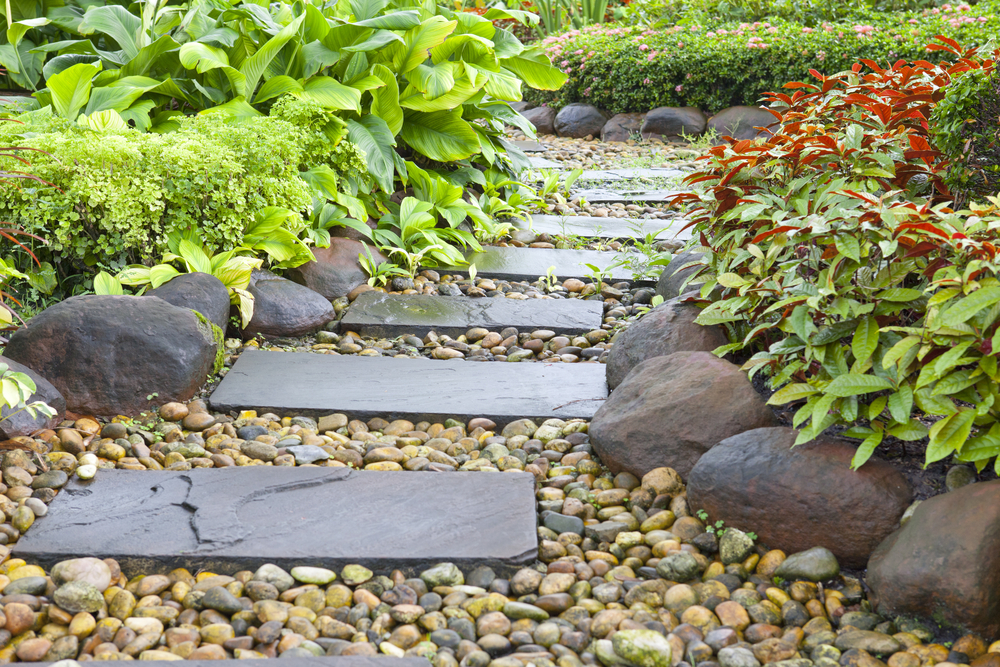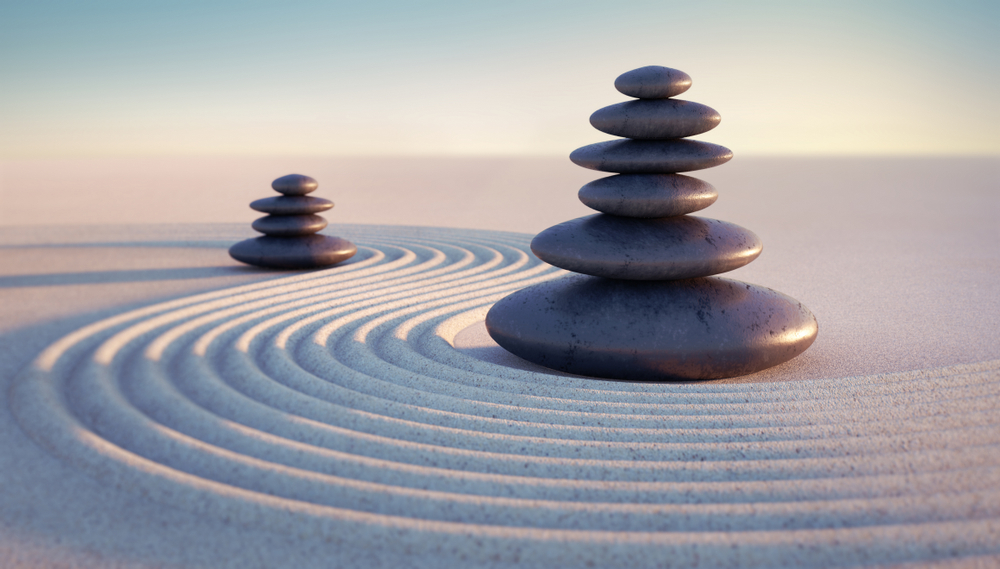A zen garden is where you’re supposed to feel at peace and aligned with the world. Many zen gardens follow strict principles and elements, as they are a place for meditation.
In Japan, a zen garden will also include zen stones. You may be wondering what do zen stones represent?
Zen stones are used to represent the mountains. However, they may also symbolize the strength and power of the figure of Buddha.
Larger stones are also placed at the entryways of zen gardens to act as a sign of welcome. In zen gardens, zen stones are stacked upon one another.
That said, zen gardens have much more to them than just zen stones. However, the zen stones are an interesting piece of the required elements.
Below, we’ll explain the use of zen stones and their many properties in zen gardens.
Table of Contents
What Is a Zen Stone?

A zen stone is named after rocks that end up sitting on a pedestal of nature. This can be a single stone on a single pillar of ice or on top of other rocks.
The zen stone is used to encompass creating order out of the chaotic world around us.
The zen stones in Japanese gardens are natural to the area. They are stones that are found around the area that can be stacked.
The ideal stones are somewhat flat, as they can be placed on top of one another.
What Do Zen Stones Stand For?
Zen stones represent several different things in Japanese and Buddhist culture.
The main thing is that a Japanese zen garden likes to represent objects and elements in nature.
In these gardens, a zen stone is representative of mountains.
Since zen stones are stacked, they are often piled high to represent small mountains in the zen garden.
The giant stacks help give a representation of the world and earth’s properties to the garden.

The Buddha statue is the main representation of zen stones in a Japanese garden. The Buddha statues are built out of stone and are said to represent Buddha, the traveling monk.
Buddhist statues represent power and strength, which was one of the main teachings of Buddha.
The stones are designed to give tribute to that.
What Else Are Zen Stones Used For?
Zen stones are utilized in many ways, depending on the person designing the garden. These stones can be designed to represent not only Buddha and mountains but also other objects.
Some everyday objects include trees, animals, and other elements that you can find in nature.
A zen garden is very personal and doesn’t follow too strict designs. So, zen stones can essentially be used for anything.
However, they are used primarily as an object representing something else in the outside world.
What Kind of Stones are Used in a Zen Garden?
There are multiple types of stone elements used in a zen garden.
The main one is ishi, but there are also different types of stones you may see lying around. Each stone has its own use and is a big part of the overall flow of the garden.
What Are Trump Stones?

A Japanese zen garden may also include a trump stone (Yaku-ishi). A large trump stone will be a stone positioned at the entrance of the zen garden.
This large stone is used to represent the entrance of the garden and will act as a way to welcome guests inside.
Trump stones must be large enough for someone to spot from a distance. In general, you want an almost bolder-sized stone.
Otherwise, it can be easy to miss where the entrance is.
What Are Stepping Stones?
Stepping stones, also known as Tob-ishi, are a type of stone that represents a garden pathway.
They help redirect your visitors and be used as a trail to follow.
Your garden will need some of these for aesthetics, but they also function to guide people where to go and where not to step.
Arranging the stepping stones will help guide people in which direction to walk and where to step.

This can help visitors who are unfamiliar with the garden.
It can also help impact the pace at which they walk through the garden.
When choosing stepping stones, you’ll want to use horizontal ones. The flat design not only makes them easy to walk on but also makes them more stable.
The last thing you want is someone to trip on uneven stones in your garden.
Stone Arrangements in Zen Gardens
Aside from stone types, there are also different arrangements of stones. These arrangements act as various designs and pathways to help guide visitors.
Aside from that, they are more complex than just using a few stones here and there.
The Nobedan Path
A Nobedan path is made of stone-paved on top. The pathway is designed to have a rectangular look and a utilitarian vibe.
The path is also meant to attract the visitor’s attention and make it easier to walk on than other pathways.

Stone Settings
Stone settings, or ishigumi, refer to how stones are arranged decoratively. There is no “correct” way to arrange stones.
However, there are popular arrangements that have religious meanings in Japanese gardens.
The most popular stone setting in Japan is the Sanzon-ishigumi. This is a triad formation of rocks located in the garden’s center.
It includes a middle stone deemed a deity-stone and then two stones on each side as a support.
The second most popular arrangement is the Yodomari. This formation is made by placing rocks in a pond on the land above an island.
These stones are meant to represent ships that are docked in the water.
Frequently Asked Questions: Zen Stones
What do rocks represent in a zen garden?

Rocks, or ishi in Japanese, are one of the main elements in a Japanese zen garden. They represent one of the earthly elements, mainly the mountains.
However, they also strongly represent the figure of Buddha, as rocks are known for their strength and power.
What do the elements of a zen garden mean?
Each zen garden has seven elements that are required. These elements include the following:
- Austerity (Koko)
- Simplicity (Kanso)
- Naturalness (Shinzen)
- Asymmetry (Funkisei)
- Mystery or Subtlety (Yugen)
- Magical or Unconventional (Datsuzoku)
- Stillness (Seukjaku)
Every zen garden needs to include these seven properties or most of them.
What stones are used in a zen garden?
The stones in a zen garden that are on the ground are generally fine gravel. Many people believe that sand is used, but sand can easily get blown away by wind or rain.
Instead, fine gravel is heavy enough to be weighed down and stay in place.
What is the purpose of a zen garden?

Zen is a type of meditation known as Zazen. It’s a meditation technique that derives from Buddhism.
A zen garden describes a Japanese Buddhist ideal place for meditation and has a special appearance.
Conclusion
Zen gardens have a lot of stone properties that many people are unaware of. A zen garden has many elements, but the stones are often used to help guide people and represent strength.
As long as you study each property, it doesn’t matter what order or design you place rocks in your garden.
That being said, if you want to follow the traditional Japanese way, you may want to include some traditional formations.
Of course, we just touched on a few zen stones and their meaning.
If you’re interested in knowing more, there are many other great resources available online.

















